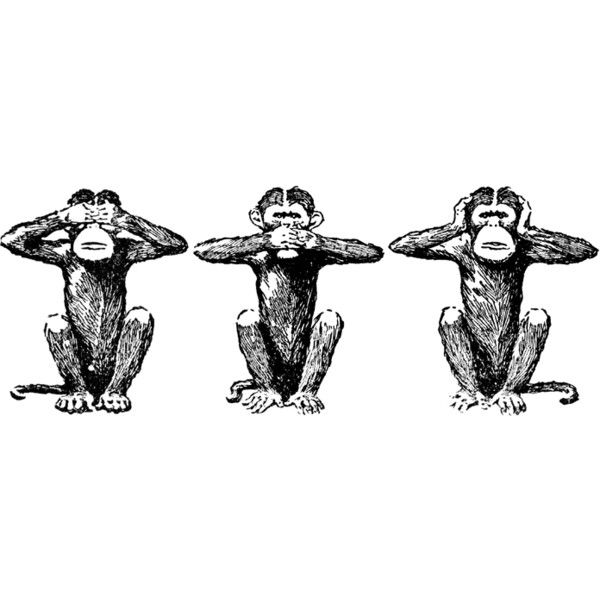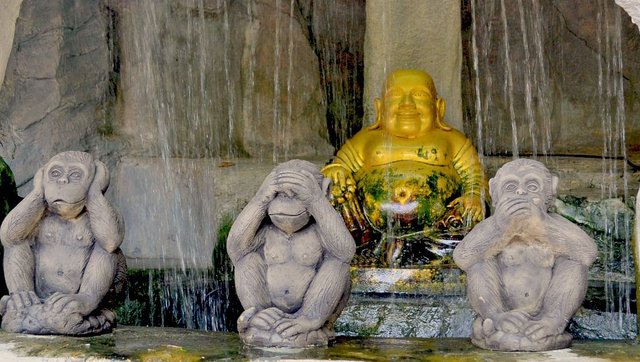Who is the prototype of the three wise monkeys and how the Buddhist proverb turns into a mafia logo

We all know the phrase, "I don't see, I can't hear anything, I will not say anything", which in its up-to-date version - "I don't know, did't hear, did't see" turns into a mafia logo. But few know where the story of the three monkeys, symbolizing the wisdom of silence, is going. In fact, the "monkey" composition is Japanese, and Buddhist wisdom.
The original composition of the three monkeys is located in the Japanese city of Niko and stands above the door of the 17th-century Tosho-gu sanctuary. The author of the work is sculptor Hidari Zingoro.
Woodcarving is a kind of illustration of a Buddhist proverb that synthesizes the wisdom of the world that you do not know what is dangerous is beneficial for survival. Panna is only a small part of the eight-panel series in the sanctuary devoted to this wisdom. In fact, the meaning of the proverb was developed in the philosophy of the Chinese philosopher Confucius, in his Lun Yu wisdom collection.

The original of the Buddhist proverb is, "Do not look at what contradicts courtesy, do not speak what contradicts courtesy, does not do what contradicts the courtesy." Probably, after being transferred from China to Japan, she also gets her short "I do not see, I do not hear, I do not speak" paraphrase, and for centuries later, gets my other propaganda and "mafia" variants becoming popular in America and Europe.
The three monkeys of the sculpture are female macaques and have names from left to right: Kikadzaru, Ivadzaru and Midzaru. In fact, if we extract from these names "dzaru", which in Japanese means "monkey", the names Kika, Iva and Mi will be obtained.
The entire composition of Japanese is called "Sambiki-Saru", which means "Three Mystical Monkeys". In Japan, there are souvenir statuettes of this composition in which another monkey has been added. It presents the principle "do not do evil" and is called Sidzaru.
According to historians, the symbol of the three wise monkeys is approximately 5 centuries. The symbol is most likely to have reached the Buddhist monks carried by an ancient Hindu tradition. It turns out that the world has always been global. Even when the distances were so "bigger" because of the lack of fast vehicles. In any case, the three monkeys are becoming more popular not in China, where they come from, but in Japan, where the oldest monument of monkey was built in 1559.
@eileenbeach has voted on behalf of @minnowpond. If you would like to recieve upvotes from minnowponds team on all your posts, simply FOLLOW @minnowpond.
https://steemit.com/@nsk455 vot & comments my post.I will do the same
Thanks for UP VOTE ME I also UP VOTE YOU @fakirafaruk